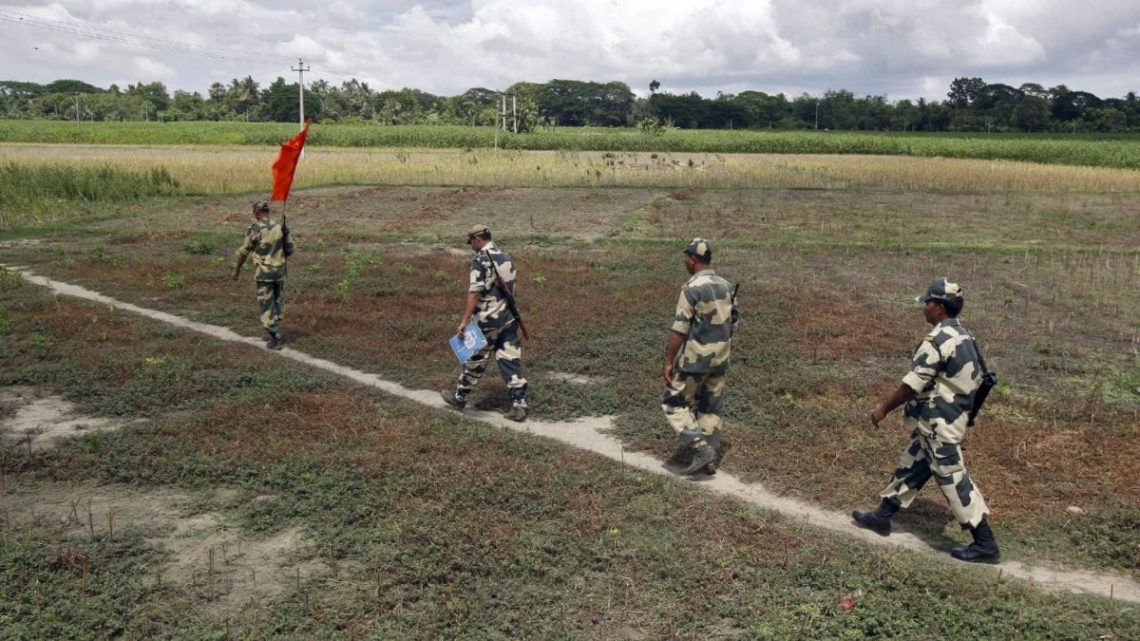Amid frosty ties with Bangladesh, India has been considering putting up permanent and temporary fences along the 400 km-odd unfenced area of the international border in south Bengal.
“Both the central as well as the state govt are working in tandem to fix the situation. Land is being acquired at multiple places near the unfenced areas, and we are in the process of completing the fencing work at majority of these places,” a report by The Times of India quoted a senior official of Border Security Forces (BSF), South Bengal Frontiers, as saying.
As per the official, the BSF has been using its own resources to install improvised barriers in places where permanent fencing couldn’t be put up due to certain constraints.
“No permanent construction or fencing is allowed within 150 yards of the international border. If we want to do so, permission is required from Border Guards Bangladesh (BGB). Hence, multiple such meetings are also underway,” the official informed.
Meanwhile, security has been intensified at India’s unfenced international border with Bangladesh to deter any further potential illegal crossings, human trafficking, and smuggling with the BSF extensively resorting to a hybrid approach, combining traditional techniques with state-of-the-art technology.
Night vision cameras, motion detectors, improvised alarms are some of the equipment that are being deployed to intensify surveillance at the India-Bangladesh international border to restrict any possible infiltration.
“In the unfenced areas our jawans have themselves improvised the fence using wire,” a report by The Indian Express quoted an official as saying.
“We use optimum manpower, technology and resources to prevent smuggling and human trafficking,” the official further said.
As per the official quoted in IE report, the South Bengal Frontier of the BSF, which patrols 913 km stretch of the India-Bangladesh international border has been extensively using electronic surveillance along with the conventional methods such as sentry posts and foot patrolling.
Of the 913 km of South Bengal frontier, 350 square feet is unfenced, the official informed.
For clear sight on the stretch as well as to prevent concealment, maintenance of the area is being done regularly which includes cleaning and trimming of grass. The official went on to say that night vision cameras and LED lights have been installed on bamboo sticks to enhance visibility and situational awareness, thereby providing round-the-clock surveillance.
“The area is monitored by night vision cameras, including fixed bullet cameras and pan-tilt-zoom (PTZ) cameras, capable of observing movement up to one kilometer away. All of these are connected to live feeds in the control room, enabling rapid response to any potential threats,” an official quoted in the IE report said.
With the enhancement of security, the tripwires at the India-Bangladesh border activate blaring alarms and trip layer flares that ignite upon disturbance or when any intruder, intentionally or unintentionally, touches the wire.
They are directly connected to live feeds in the control room which helps in rapid response to any potential threats in the tough terrain and riverine sections.
For enhanced sentry monitoring, electronic surveillance systems, including 360-degree rotating cameras and motion-sensitive sensors, have been deployed. These sensors trigger an alarm if anyone tries to tamper with the camouflage surrounding the equipment.
“Technology, manpower and resources are filling up the gaps. All movements along the border are continuously monitored at control rooms, from where directives are issued to on-duty sentries. To ensure a measured response, BSF personnel are equipped with pump action guns (PAGs), non-lethal weapons, while on sentry duty,” an official was quoted as saying in the IE report.
Also, netting of up to 20 feet is used to cover smart fences to prevent the throwing of objects across the border.
During monsoons, at time of heavy rains, the BSF faces severe challenges in keeping up the vigil near the Betna river in Petrapole as the area usually gets submerged under water. To address the situation, the border force has implemented a multi-layered approach that includes improvised fencing, constructed using bamboo and copper wire to restrict movement. Along with this, LED lights have been installed on bamboo sticks, and all of them are connected to the control room of the Border outpost. “Conditions become more challenging during the monsoons as the Betna river flowing along the border and other water bodies in this area overflow owing to heavy rain,” an official said.
India shares a massive 4,096 km border with Bangladesh. Of this, 2,216 km long stretch runs alongside West Bengal.
Link to article –
India installs latest surveillance equipment at unfenced border with Bangladesh

